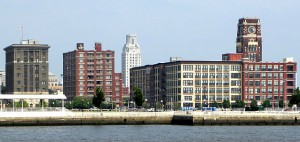New Jersey’s Economic Opportunity Act and Smart Growth: A Progress Report
Updated incentives are largely successful at directing growth appropriately; however, the emphasis on transit locations has been reduced.
The New Jersey Economic Opportunity Act (EOA) was signed into law in September of 2013, consolidating five state economic development tax credit programs into two – the Grow New Jersey Assistance Program (Grow NJ) and the Economic Redevelopment and Growth Program (ERG). In the run-up to the EOA’s passage, New Jersey Future successfully advocated for these programs to include bonuses or priority treatment for applicants located in, or seeking to locate in, any type of “smart-growth” locations.
To evaluate the effectiveness of the EOA’s smart-growth provisions, New Jersey Future has produced a report examining the locations of projects receiving economic-development awards, both before and after the act’s passage. This report, New Jersey’s Economic Opportunity Act and Smart Growth: A Progress Report, found that, for the nine months through June 2014, these programs appear to be functioning well at steering economic growth to already-developed areas; all but one of the 122 projects examined were located in some type of “smart-growth” location.
Employer locational decisions are an important driver of overall development patterns, since residential growth tends to follow employment growth as people seek to minimize the hardship of their commutes.
The business incentive programs also continue to direct almost two-thirds of their awards to the state’s most fiscally and socioeconomically distressed cities, towns, and inner-ring suburbs, as their predecessor programs did before the EOA’s passage. Camden, Trenton, Paterson, and Passaic were designated by the act as Garden State Growth Zones (GSGZs), with reduced project size eligibility requirements and increased award sizes. Camden accounted for four of the five post-EOA awards that have been given in the GSGZ municipalities, after having received only a single award in the entire pre-EOA period.
One casualty of the updated incentive programs appears to be the focus on transit. The dissolution of the Urban Transit Hub Tax Credit (UTHTC) program, which issued awards exclusively in transit-accessible locations, has resulted in a 25 percent drop in the percent of incentive dollars awarded to projects within half a mile of transit compared to awards from the three main pre-EOA programs. However, part of the explanation for this may be an increase in the number of awards being given to industrial projects, which are not optimal uses for scarce space in downtown TOD locations.
The post-EOA study period comprises only the nine months thru June 2014; therefore, findings should be considered preliminary, since patterns appearing in the initial round of awards may not persist as the sample size increases.












